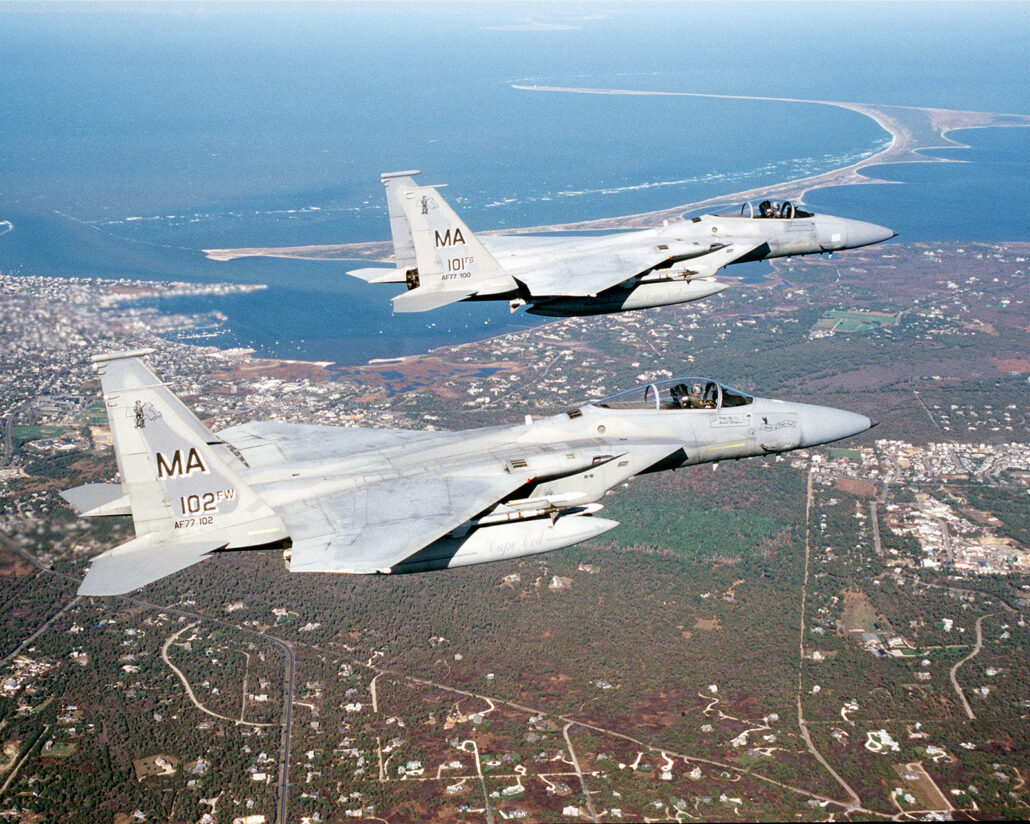Following the terrorist attacks of September 11, 2001, the United States and a coalition of its allies embarked on a global campaign against terrorism. The U.S. Air Force plays a vital role in that ongoing battle, notably in the tasks carried out by the service in the three major military operations launched in the wake of the attacks: Operation Noble Eagle (ONE), Operation Enduring Freedom (OEF), and Operation Iraqi Freedom (OIF).
It was almost immediately clear that the hijackings of September 11 presented the country and its political and military leadership with a new, or at least altered, set of pressing security challenges that would, for the foreseeable future, change, if not expand, national defense priorities and affect decisions on programs and spending. Suddenly, on September 11, the first and most visible priority of the national defense apparatus was homeland defense.
Perhaps the most dramatic impact of the hijackings was the military response they provoked. The most immediate and highly visible manifestations of this response were the air defense operations conducted by the U.S. Air Force over New York City, Washington, D.C., and other locations. These operations, which began minutes after Federal Aviation Administration (FAA) air traffic controllers notified Northeast Air Defense Sector (NEADS) personnel that the first plane had been hijacked, have continued, under their official name, Operation Noble Eagle, until the present.
The name “Operation Noble Eagle” refers to a Department of Defense-wide enterprise and, for the U.S. Air Force, to the service’s operations related to homeland security, such as combat air patrols over U.S. cities; to its actions to ensure force protection; and to its support to federal, state, and local agencies after the 9/11 attacks, such as recovery operations undertaken and disaster assistance provided in New York City and at the Pentagon.
From the hours after the attacks of September 11, 2001, through April 12, 2002, Operation Noble Eagle evolved from an improvised response and temporary expedient to a permanent defense requirement and major force commitment involving thousands of Airmen from the Air National Guard, Air Force Reserve, and regular Air Force; hundreds of fighters, tankers, and airborne early warning aircraft; and components of the other armed services and various civilian departments and agencies.
The tens of thousands of sorties flown under Operation Noble Eagle include round-the-clock combat air patrols over New York City and Washington, D.C., in the months after the 9/11 attacks; random patrols over urban areas, nuclear power plants, weapons storage facilities, and laboratories; sorties in response to possible air threats in the United States; and air cover support for special security events such as the Winter Olympics in Utah, the World Series, the Super Bowl, space shuttle launches, United Nations general assemblies, presidential inaugurations, state funerals, and State of the Union addresses. Fighters of the air sovereignty alert wings of the various sectors of the Continental U.S. Region remain on duty twenty-four hours a day, seven days a week. Operation Noble Eagle reached a milestone in late December 2009 when two Air National Guard F-15 Eagles from the 125th Fighter Wing, Detachment 1, at Homestead Air Reserve Base, Florida, intercepted a small airplane and accomplished the 55,000th consecutive accident-free CONR sortie.




